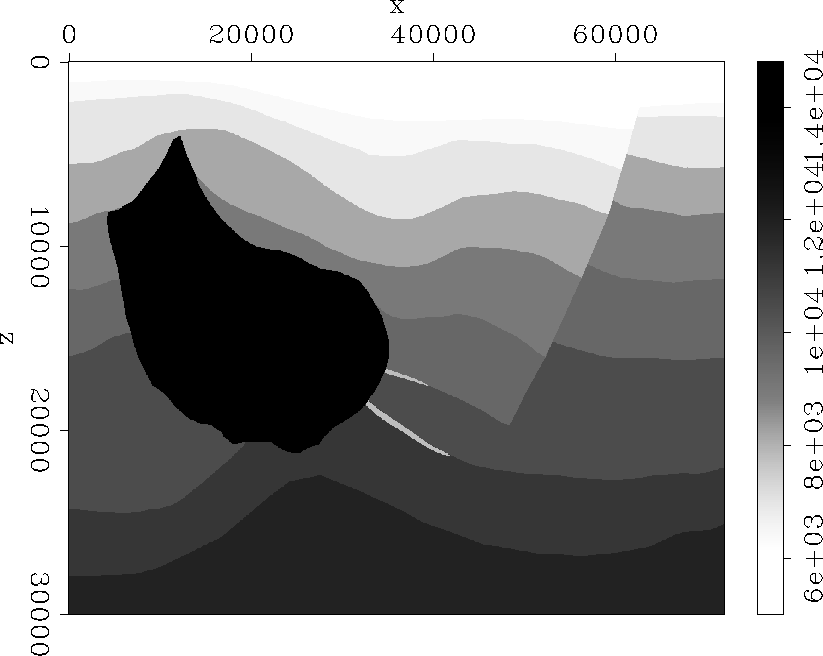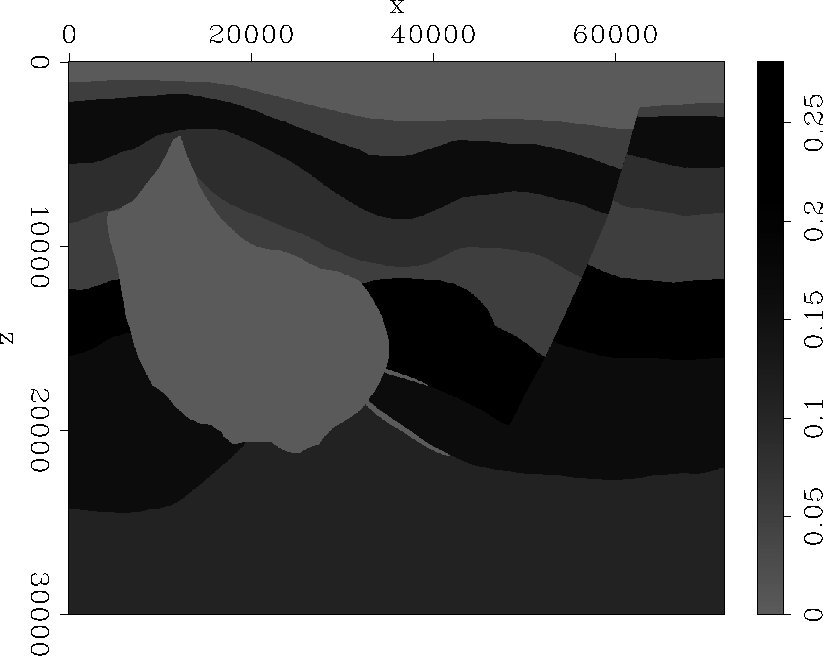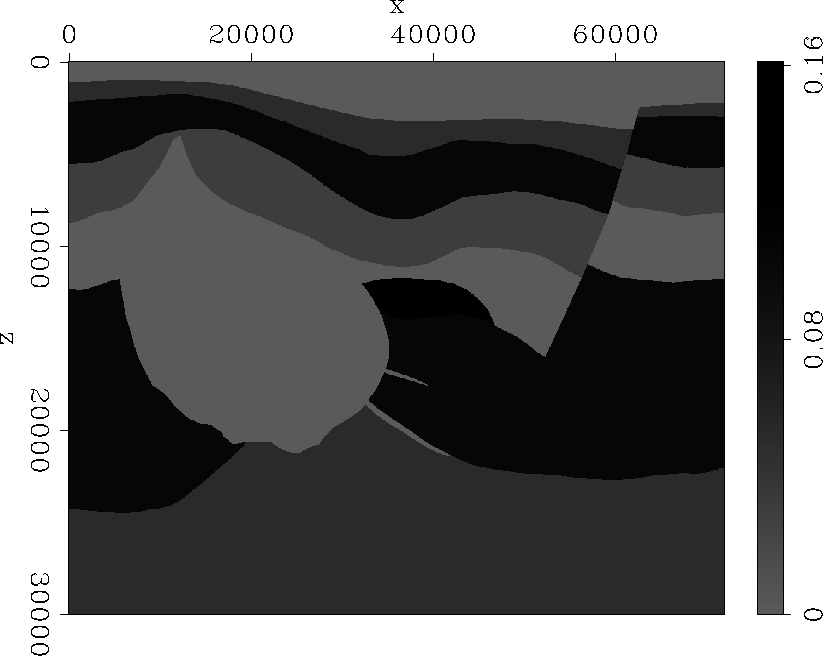




Next: A real dataset: ExxonMobil
Up: Numerical examples
Previous: Impulse response
Figures ![[*]](http://sepwww.stanford.edu/latex2html/cross_ref_motif.gif) -
-![[*]](http://sepwww.stanford.edu/latex2html/cross_ref_motif.gif) show a synthetic model for VTI media. Figure
show a synthetic model for VTI media. Figure ![[*]](http://sepwww.stanford.edu/latex2html/cross_ref_motif.gif) is the
velocity model, Figure
is the
velocity model, Figure ![[*]](http://sepwww.stanford.edu/latex2html/cross_ref_motif.gif) is the map of the anisotropy parameter
is the map of the anisotropy parameter  , and Figure
, and Figure ![[*]](http://sepwww.stanford.edu/latex2html/cross_ref_motif.gif) is the map of the anisotropy parameter
is the map of the anisotropy parameter  . There are 720 shots in total and the maximum offset for each shot
is 8000 meters. The challenging part of this model is to accurately image the steep fault, salt flank and the
two abnormal sediments near the right corner of the salt body. I run a plane-wave migration, using the optimized
implicit finite-difference operator as the extrapolator. I generate 70 plane-wave sources, for which the take-off angles
at the surface range from
. There are 720 shots in total and the maximum offset for each shot
is 8000 meters. The challenging part of this model is to accurately image the steep fault, salt flank and the
two abnormal sediments near the right corner of the salt body. I run a plane-wave migration, using the optimized
implicit finite-difference operator as the extrapolator. I generate 70 plane-wave sources, for which the take-off angles
at the surface range from  to
to  . Figure
. Figure ![[*]](http://sepwww.stanford.edu/latex2html/cross_ref_motif.gif) shows the image. Notice that the steeply
dipping salt flank and the fault are well imaged. The steepest part of the salt flank is about
shows the image. Notice that the steeply
dipping salt flank and the fault are well imaged. The steepest part of the salt flank is about  .The abnormal sediments also are well imaged.
vpani
.The abnormal sediments also are well imaged.
vpani
Figure 4 Vertical velocity model.




 epsani
epsani
Figure 5 Anisotropy parameter  .
.




 dltani
dltani
Figure 6 Anisotropy parameter  .
.




 imfdhess
imfdhess
Figure 7 Implicit finite-difference migration.










Next: A real dataset: ExxonMobil
Up: Numerical examples
Previous: Impulse response
Stanford Exploration Project
4/5/2006

![[*]](http://sepwww.stanford.edu/latex2html/cross_ref_motif.gif) -
-![[*]](http://sepwww.stanford.edu/latex2html/cross_ref_motif.gif) show a synthetic model for VTI media. Figure
show a synthetic model for VTI media. Figure ![[*]](http://sepwww.stanford.edu/latex2html/cross_ref_motif.gif) is the
velocity model, Figure
is the
velocity model, Figure ![[*]](http://sepwww.stanford.edu/latex2html/cross_ref_motif.gif) is the map of the anisotropy parameter
is the map of the anisotropy parameter ![[*]](http://sepwww.stanford.edu/latex2html/cross_ref_motif.gif) is the map of the anisotropy parameter
is the map of the anisotropy parameter ![[*]](http://sepwww.stanford.edu/latex2html/cross_ref_motif.gif) shows the image. Notice that the steeply
dipping salt flank and the fault are well imaged. The steepest part of the salt flank is about
shows the image. Notice that the steeply
dipping salt flank and the fault are well imaged. The steepest part of the salt flank is about 


